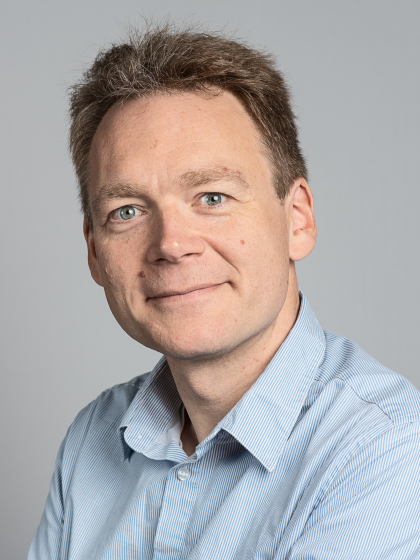prof. dr. P.C.A. (Patrick) van der Wel

Solid-state NMR spectroscopy
We use and develop multidimensional solid-state NMR methods to probe the chemical and molecular structure and dynamics of large, often insoluble, macromolecular assemblies. On the one hand, we use NMR as a versatile and powerful tool in analytical chemistry, dessecting chemical composition and modifications in a wide range of sample types. Moreover, we design and implement techniques that measure the geometry of molecules in atomic-resolution detail. Crucially, we determine detailed structural features even in context of samples that lack overall (crystalline) order; hydrogels, protein aggregates, lipid nanoparticles and other types of nanomolecular assemblies.
Structure-function studies via ssNMR: A central goal in our ssNMR studies is to disentangle how (chemical) structure (and dynamics!) dictate and enable functional properties of biological as well as human-made assemblies. The ability of ssNMR to probe dynamics (in the form of relaxation measurements as well as order parameters) is often of particular importance, given that functional processes often require particular types of dynamics.
Methods development in solid-state NMR
Although we apply ssNMR methods in various applied contexts (see below), a central focus of our research is on the further development and implementation of novel methods in ssNMR. Magic angle spinning (MAS) NMR is a highly versatile tool. We focus on specific methods, including the application in context of photochemical and optogenetic studies, dynamics analysis (and in particular spectral filtering methods), solvent-solid interface studies, and structural analysis via torsion angle measurements. Often the method development is tailored to the particular topics of interest, described below.
Structural biology of amyloidogenic self-assembly in human disease
One recurring theme in our work relates to the ability of some proteins to form filamentous structures based on long intermolecular β-sheets. This principle gained notoriety in context of Alzheimer's disease, but similarly underpins many other neurodegenerative diseases. Since 2010, we have been using ssNMR (and other biochemical methods) to illuminate the misfolding and aggregation behaviour of expanded polyglutamine proteins involved in Huntington's disease (HD) and related disorders. We combine structural and dynamic measurements with mechanistic studies, with a growing focus also on understanding modes-of-action for potential inhibitor or drug molecules.
Peptide self-assembly in functional bio-/nano-materials.
The properties of amyloid-like filamentous materials are increasingly recognized for their potential in the design of self-assembling human-made materials with a wide range of functional properties. In these design processes, the mechanistic principles of peptide self-assembly are leveraged, borrowing from unique properties seen in biological materials (such as amyloid fibrils or silk, which have remarkable materials properties). Solid-state NMR studies and mechanistic/kinetics assays are used to dissect the structure-function relationship and how these find their origins in the self-assembly pathway.
Protein-lipid interactions & membrane structure.
Lipid membranes are sites of critical function as well as dysfunction in biology and human disease. We employ ssNMR to dissect the dynamic interactions that underpin various membrane-associated processes. Particular topics of interest include the role of membrane biophysics and the molecular recognition events that facilitate the trafficking and targeting of membrane-binding proteins. A key focus in this research is on mitochondrial membranes, and how they are subject to (functional) chemical modifcations, such as (per)oxidation of cardiolipin lipids.
Polysaccharides in hydrogels and extracellular matrices.
Since 2018 we have a growing interest in ssNMR methods to study (hydrated) polysaccharides in context of biology (extracellular matrix; ECM) and human-made hydrogels. We especially work on the analysis of high-molecular weight polysaccharides, such as cellulose, alginates and hyaluronic acid, which are challenging to analyse by other analytical chemistry methods.
For more informatie visit also our research group website.
